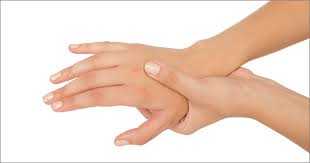Understanding Paresthesia
We often experience odd sensations over various parts of our body. When we sit in a particular position for some time. especially when cross-legged, we may notice that one leg feels a little numb (maybe like it is almost asleep). When the sensation returns immediately. there is a feeling of sudden tingling in the affected area. which continues till the sensation completely recovers.
A similar situation can occur in the upper limbs, if you are resting an arm in a particular posture. This is usually related to the recovery of the compression, over a small peripheral nerve. It occurs for a very short time and feels totally normal within a few seconds.
Sometimes, similar sensations can be experienced by individuals frequently and on a chronic basis called paresthesia. This condition is an abnormal sensation or feeling where tingling or pricking is caused (feeling like poking with pins or needles) by excess pressure or due to damage of the peripheral nerves.
The description of the sensation experienced may be varied such as shooting. aching. burning, feeling of tightening, pulling sensation, sometimes a raw feeling, a feeling of twisting or sometimes. even a sensation of something crawling over the affected area.
These sensations are described as positive symptoms, as opposed to a feeling of numbness or deadwood feeling termed negative symptoms, which can also occur in certain neurological conditions. Most paresthesia occurs spontaneously, but some are particularly worse. when triggered by sometimes, even the mildest of stimuli. Paresthesia may also be painful at times, but often it is just a disturbing and nagging sensation.
Causes Of Paresthesia
Persistent pressure over certain nerves like the peroneal nerve (While sitting cross-legged for a long time), ulnar nerve or radial nerve (when the arm is held in an abnormal posture) or even the sciatic nerve, leading to tingling over the thighs.
Involvement of the peripheral nerves in deficiencies, including vitamin B12 (cyanocobalamin), vitamin Bl (thiamine) and vitamin B6, vitamin E and other micronutrient deficiencies.
Associated conditions which commonly affect peripheral nerves include Type 2 Diabetes Mellitus, hypothyroidism, calcium, and parathyroid disorders. renal disorders etc. Spinal cord involvement may also be associated with nerve compression of the exiting nerve roots called radiculopathy and paresthesia, with associated symptoms including weakness of the affected muscle which may be a prominent feature.
Nerve entrapment syndromes like carpal tunnel syndrome may cause paresthesia as well and usually with associated significant numbness of the affected fingers, Paresthesia may also be associated with connective tissue disorders like rheumatoid arthritis, SLE, etc.
Further, paresthesia is very common in patients with alcohol dependence syndrome primarily related to toxic damage of the nerves and related associated vitamin deficiencies. Also, a common cause of paresthesia is the significant neuropathic discomfort which occurs after herpes zoster infection (shingles) over the affected nerve distribution area.
Identifying And Differentiating The Causes
After a detailed history and a thorough neurological examination, your doctor would be able to narrow down the possible causes and would plan further evaluation. Blood work is necessary to 100k tor evidence of anemia, thyroid hormone levels, vitamin B12 deficiencies, Type 2 diabetes mellitus, renal dysfunction or any other metabolic abnormality.
Also, a more detailed evaluation may be necessary in some patients which may include nerve conduction studies to assess the extent of nerve involvement and further imaging, including spine or brain imaging. Particular types of paresthesia can be diagnosed clinically itself.
For example, the diagnosis of paresthesia associated with herpes zoster infection is based on the preceding rash seen and subsequent nerve-related symptoms. A type of paresthesia commonly seen in diabetic patients is meralgia paresthetica, which refers to a tingling feeling over the thighs. due to involvement of the lateral cutaneous nerve of the thighs. This, again, is more of a clinical diagnosis.
Paresthesia may be painful at times but often it is just a disturbing and nagging sensation
Managing Chronic Paresthesia
A lot of these symptoms for chronic paresthesia resolves over time with treatment of the primary condition. For instance, strict blood sugar control is known to reduce symptoms of diabetic-related neuropathy. Correction Of vitamin B12 deficiency usually requires Bl 2 injections to supplement the levels and greatly helps the associated neuropathy.
Most paresthesia conditions are treated with medications for variable periods of time. Some drugs used include Gabapentin and derivatives including Pregabalin, Amitryptiline and its derivatives, Carbamazepine. Duloxetine etc. Sometimes, a course of steroids may also need to be used to reduce inflammatory responses of the nerves.
As the primary condition gets resolved. most paresthesia gradually improves and an individual is relieved of these troublesome symptoms and is able to lead a normal life.
